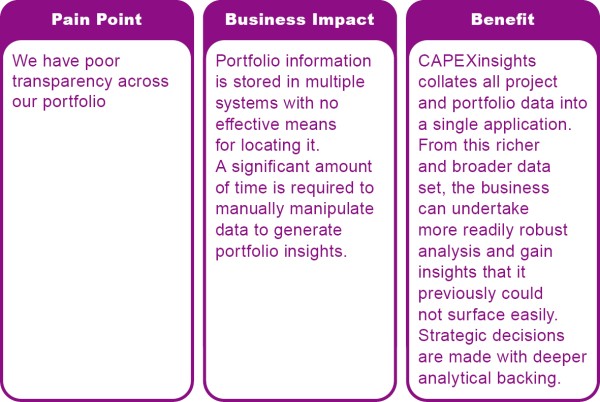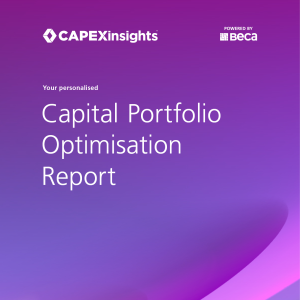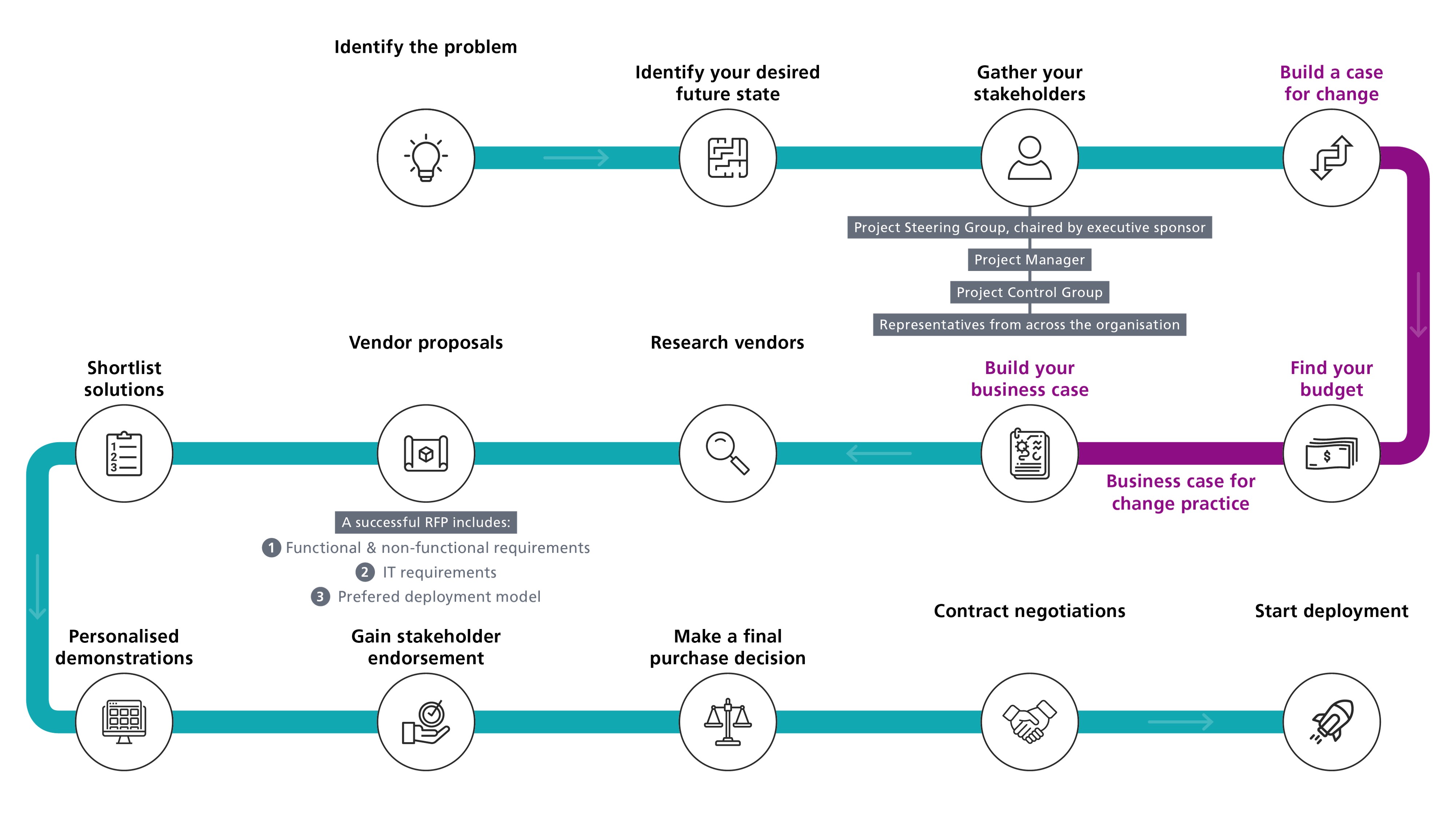Globally enterprise organisations are striving for higher performance from their project management programs with a desire to do more with less. Naturally, capital portfolio management programs are no different.
Yet surprisingly, 23% of organisations don't use any kind of project management software to manage multiple projects – which subsequently gives little insight into the performance of the portfolios.
Mike Duell and Kim Featherstone know the correlation between an organisation's project management maturity level and software use is undeniable - 95% of organisations within the highest maturity category use project portfolio management technology.
The benefits go beyond reporting capabilities though; the value of portfolio management software is clear in strategic alignment and measuring ROI, prioritisation of projects, embedding project management methodologies into the project lifecycle, and guidance towards greater project management capability.
With the adoption of project management methodology tethered to improved project performance, the business case for capital project portfolio management software is a simple one.
But where do you begin? We know that buying enterprise software can be overwhelming. The average buying group in any organisation involves 6-12 internal stakeholders, with a range of varying expectations. And some have little experience buying enterprise software.
Enterprise organisations often have significantly more hoops to jump through due to the size and scale of the business. It's not uncommon in larger organisations for the buying process to take more than six months, from initial discovery to contract close. Although no buying journey is linear, we do find they often go through similar steps.
Buyers Roadmap
During your research phase and before you have decided that you need a software solution, you can begin to lay the foundations for a compelling business case.
1. Engage stakeholders and build consensus
2. Map solution benefits to business pain points
3. Quantify the benefits
4. Preparation is key
“As much as 11% of capital portfolio investment is lost to inefficiencies with project portfolio management. With performance directly linked to using a dedicated tool to manage projects and portfolio success, it makes sense to explore your organisation's case for change" - Mike Duell
Engage stakeholders and build consensus
We see organisations experience similar challenges when it comes to capital project portfolio management. By solving these pain points and mapping them to the business impact and the benefit to stakeholders and beneficiaries, the value of making the change will become clear.
For example:

“ We find creating a vision of the organisation's future state will make it easier to build consensus with the right internal stakeholders" - Kim Featherstone
Quantify the benefits
Capital project portfolio management tools can support the achievement of business objectives and maximise commercial returns. At a project level, the return on investment comes from:
• Reduced project budget overruns from improved visibility enabling effective analysis of project performance and better management of projects.
• Savings from reduced project management effort and increased profit potential. Projects completed ahead of schedule deliver their benefits faster and allow you to divert your people into other value-adding tasks.
• Further savings due to improved resource allocation, as those on the shop floor can spend more time on tools and less time filling in paperwork.
Industry research suggests that as much as 11% of capital portfolio investment is lost by some organisations - which can equal millions of wasted expenditure in your project portfolios.
There are three areas across the portfolio that present an opportunity for greater efficiency when addressed:
• Avoidable costs – like gold plating assets or flawed projects going all the way to the CapEx gate which squanders expenditure and resource allocation that could be used in other projects.
• Value erosion – poor financial management means capital expenditure could have been used elsewhere or from too much duplication between systems.
• Lost opportunities – when strategic projects are delivered late the organisation may lose the opportunity to reach its strategic objectives and remain competitive.
"Until you can easily drill down into valuable information aggregated across the portfolio to see what’s going wrong, it’s hard to calculate efficiency gains.” - Mike Duell
 Use our calculator to produce your personalised Capital Portfolio Optimisation Report.
Use our calculator to produce your personalised Capital Portfolio Optimisation Report.
IN YOUR REPORT WE WILL:
· Outline your potential capital improvement
· Calculate your percentage of opportunity and loss
· Address the specific challenges you are experiencing
· Make suggestions for solutions that relate to your organisation
· Share resources to create meaningful change
Just like project management; preparation is key
By preparing your business case with a considered approach your key stakeholders will have the confidence to support your conclusion and green-light your proposed change. Having well-thought-out answers to potential questions gives you the advantage when presentations are often given mere minutes to address any outstanding concerns.
You will find there are common questions raised when proposing to implement a project portfolio management solution. For instance, your stakeholders will want to know these answers:
• How will the project management tool integrate with existing business solutions.
• The return on investment of project portfolio management tools.
• What time, money and resources need to be considered to realise the change.
• What change management assistance is offered.
Having these answers prepared ahead of time will help to expedite buy-in and make potential project management software vendors easier to veer toward in your business case.
We have constructed many business cases. In fact, business case validation is part of our product because we know it’s part of any successful capital strategy.
Download our complete guide to buying Capital Project Portfolio Management software and use the resources to help you build your case for change.
